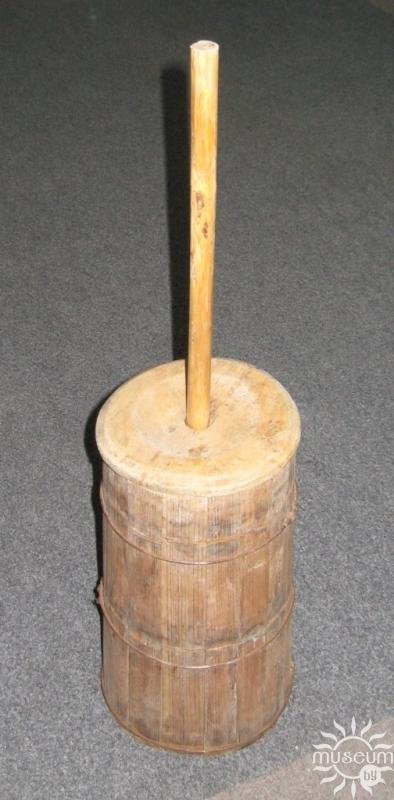Until the middle of the 19th century one of the most necessary adaptations in everyday life among the peasants was the churn. In the museum you can see this device made over half a century ago by master Philip Andreevich Yermolaev, a resident of the village of Tkachevo, Polotsk district. The churn consists of three parts: a little wooden head, narrowed at the top, a round lid with a hole and a beater-knob in the form of a long rod with a crosspiece at the bottom.
The process of manually whisking oil was quite tedious. Cream or sour cream was poured into the container and then the handle was moved up and down for about two hours. To obtain 1 kg of oil, it was necessary to have almost 4 liters of cream. Then the contents of the butter churn were poured into a basin with cold water. The oil that floated to the surface was collected with a spoon and tightly placed in a wooden rectangular shape - oil measurement. The molding covered with a lid was placed at night in a cold place. By the morning a bar of fresh butter was ready.

